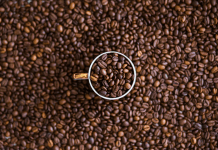What is Baby-Led Weaning?
Baby Led Weaning (BLW) is introducing finger-foods and hand-held foods to babies when they start solids instead of spoon-fed purees. Traditionally, American parents are taught to use pureed foods starting around 6 months. In BLW, parents offer finger foods right from the beginning. The important feature of BLW is that the baby is in control of the feeding, allowing the infant to control their intake. Baby-led weaning makes introducing solids easier and more enjoyable for the whole family and encourages your baby to become confident and happy at mealtimes and to enjoy a variety of food as they grow up.
Babies are programmed to play, experiment, and explore; it’s how they learn about the world around them. They use their hands and their mouths to find out about all sorts of objects, including food. With baby-led weaning, a baby can explore food at their own pace and follow her instincts to eat when they are ready.
We don’t exclusively BLW, but it’s more of a 70/30 split in favor of it. While I love making purees for my child when I have the time, BLW makes it super easy to serve food for her because it’s exactly what the rest of the family is eating. Not to mention it makes me more conscious of serving healthy food for the entire family at all times!
Letting the baby share what’s being cooked for the rest of the family is less expensive than buying or preparing special baby food or purees.
Beginning Baby-Led Weaning
Parents should be on the lookout for signs of readiness in their baby before beginning the baby-led weaning process. It is not recommended to begin BLW before your baby is at least 6 months old. Here are some things to look out for once they are the proper age:
- They should be able to sit up with support and have neck support .
- Baby should be showing interest in food
- They’re opening their mouth to suck on items
- Alertness or change in facial expressions during mealtime
How much food do they need?
There is no specific amount of food that babies are required to consume at any point in this process. The beauty of it being baby-led is that they will tell you when they’ve had enough, and since breast milk or formula is being continued, they will make up the calories through milk.
Infants starting complementary foods should initially consume solids 2-3 times a day between 6-8 months, in addition to milk feeding. The frequency should be increased to 3-4 times between 9-11 months as the infant improves their skills.
First foods
When first starting baby-led weaning, begin with steamed and sliced food so the infant can easily chew and swallow the items. Give soft fruits and vegetables initially. Then introduce lightly cooked harder foods that can be easily chewed with bare gums. Soft foods should be soft enough to be mash with the tongue or your finger.
Great first soft foods might be avocado, banana, steamed sweet potato, steamed carrots, and scrambled eggs. Offer water in small amounts during mealtime in an open cup as early as 6 months. This helps them develop their oral motor skills faster than them using a sippy cup which requires a similar sucking technique as bottles.
Food should ideally be shaped like a finger and be easily able to fit in the infant’s hand with some sticking out of their fists. Initially, the baby will be exploring the food and creating a mess more than eating. That’s just part of the process!
Safety First!
Small round foods should be avoided as they can be choking hazards. Steer clear of whole grapes, hot dog pieces, whole cherry tomatoes, peanuts, and popcorn. Cut round soft foods into quarters and avoid hard items like peanuts or popcorn. Some foods that have tougher skins such as apples can be removed to make it a bit easier for baby to manage, and can also be cooked to soften the texture.
The goal is to create a routine for the infant similar to the families so that they mirror their parent’s dietary behaviors. Sit down with your baby to show them how to eat. Monkey see monkey do!
As with everything, parents need to supervise their child during mealtime to watch for any signs of choking. Parents should be able to differentiate choking from gagging. Choking is often silent as infants are not able to talk or breathe, and the baby’s nails, lips, and skin may turn blue. Gagging, in contrast, is noisy and dramatic as the infant will cough and jump. Most babies gag and choke multiple times during mealtime. Don’t be too concerned, this is the body’s defense mechanism against choking.
This is just scratching the surface understanding how to start baby-led weaning when your babe starts solids. I hope this information will give you the confidence to start!


















